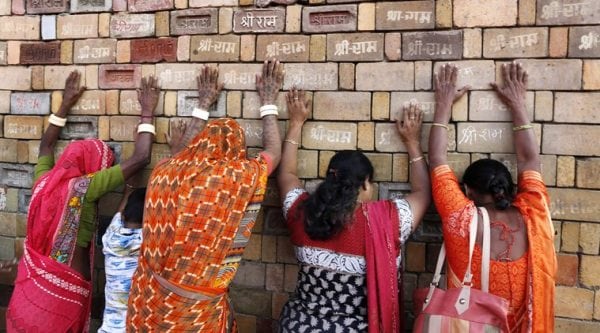 What we today call the Indian ethos and values can all be traced to the example set by Shri Ram. (AP)
What we today call the Indian ethos and values can all be traced to the example set by Shri Ram. (AP)
The Mughals came and disappeared into history. The Portuguese came and went. The Dutch came and went. The French came and went. The invading Afghans and the Persians came and disappeared. The British came, lasted a while but were also sent back. The Nehruvian construct dominated the first six decades of Independent India before its dark underbelly made it unsustainable.
The world order has been written and rewritten and is now being re-written again in the 492 years that have elapsed since 1528 CE. In almost half-a-millennium since then, nearly everything that men once believed would last for eternity has faded away in the sands of time. But what did not fade away was the faith of a civilisation in Maryada Purushottam. The times through these centuries were dark, the sacrifices asked and made were immense, the battle may have seemed to be insurmountable at times, and yet the faith persevered. August 5, 2020, is going to be a vindication of that faith and belief.
When every other ancient civilisation has been lost to either proselytising groups or to communism, what is it about the Sanatan Dharma that it has kept the Indian civilisation going? The answer undoubtedly lies in the influence that Shri Ram’s life has had on our people over millennia.
Shri Ram’s life was not easy. As a young boy still in his teens, he was out in the forests, battling demons and wild creatures. In the prime of his youth, just after his marriage, he was exiled for 14 years. In exile, he had to constantly battle well-ensconced enemies with advanced weapons. During the exile, his wife was abducted by a king who was not only deceitful but also commanded the preeminent military force of his time. Shri Ram had to build the world’s first bridge across the sea to reach Lanka, where his wife was held captive.
Yet, not once, not ever, did Shri Ram fail in any endeavour he set his mind to. Shri Ram never lost belief in his powers. If perseverance was required, he quietly persevered. If diligence was required, he was industriously diligent. If patience was required, he was supremely patient. If planning was required, he carefully planned to the minutest detail. If canvassing was required, he artfully canvassed. If tact was required, he was persuasively diplomatic. When justice was expected, he was impartially fair. And when deadly force was required, he was devastatingly effective.
During his years in exile, instead of sulking, Shri Ram took it upon himself to use his martial skills to protect the institutions of learning. Simultaneously, he used his time to build a common thread across our land, knitting together the traditions and culture of such great sages as Vishwamitra, Atri, Anusuiya, Bhardwaj, Sharbhanga and Maharshi Agastya.
Shri Ram conquered Kishkindha and Lanka and yet he did not usurp power for himself but instead handed over the reins to the local rightful heirs. His aim was never expansionism. To every adversary, no matter how vile, he first offered peace. But when spurned, despite being persistent, his peace-loving nature never became his weakness. Justice dispensation was swift and deadly. Shri Ram mastered all the weapons of his time, so as not to be surprised in a war. Yet, he was never injudicious or indiscriminate in their use.
Shri Ram built alliances and nurtured friendships. His friendship extended to people of all classes. At home, he was the ideal son and brother. Perhaps the only place where he was outmatched was by his wife who was as, if not more, intelligent, ethical, learned, fierce and determined.
What we today call the Indian ethos and values can all be traced to the example set by Shri Ram. For multiple millennia, India and Indians walked the path shown by him. During these centuries, India was the Vishwa Guru in every sense of the word, be it economically, culturally or scientifically. Our decline among the community of nations, in large part, coincided with the defiling of the temple at Shri Ram’s birthplace in 1528.
The first exile of Shri Ram lasted 14 years. His return from that exile set the stage for Ram Rajya. The second exile was much longer. But the wait is over. Providence has it, that the world order is being rewritten again in front of our own eyes, coinciding with the return of Shri Ram.
A moment like this comes rarely in history when we are lucky to witness the fulfilment of the aspirations of a billion people. The bhoomi pujan by Prime Minister Modi on August 5 is not the culmination of a struggle but the beginning of a glorious new chapter in the unbroken chain of the oldest continuously living human civilisation.
The writer is CEO, Bluekraft Digital Foundation and was earlier director (content) MyGov